Review: Apple iPhone 6s Plus
Sep 30, 2015, 11:00 AM by Eric M. Zeman
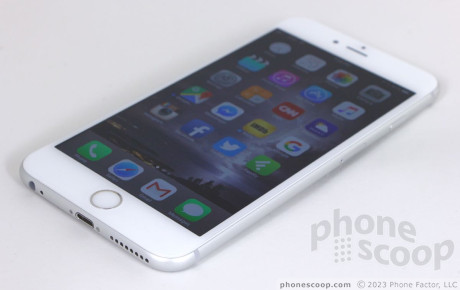
Apple's newest iPhones may look like last year's, but the company packed tons of appealing updates into the 6s Plus. New features such as 3D Touch and the improved cameras impress, while refinements to iOS 9 and how the 6s Plus interacts with the platform give the handset new-found power. Here is Phone Scoop's in-depth review.
Hardware
Is It Your Type?
Most iPhone owners know who they are. You're either firmly entrenched in the Apple camp or you're not. This year's iPhone may look like last year's, but almost everything under the hood has been improved. For those who upgrade every year no matter what Apple does, there's plenty to like. If you already own an iPhone 6 Plus and are on the fence about whether or not the 6s Plus is worth the price, we're here to tell you what you need to know.
Body
The iPhone 6s Plus has an impressive outer design, even if we've seen it before. On even years, we get a new iPhone design; on odd years, we get an updated "S" version of the existing phone. As the name clearly implies, the 6s Plus is a new-and-improved 6 Plus.
The 6s Plus is a large smartphone, but not the biggest we've seen. It falls into the "phablet" category, though huge-screened phones have become quite common. Upon taking the phone out of the box, I instantly noticed the size and weight increase. It shares its length and width with the iPhone 6 Plus, but the 6s Plus is 0.3mm thicker and 0.7 ounces heavier. These may not seem like significant amounts — and they're certainly not egregious changes — but they are enough to feel and see when the two phones are used side-by-side.
For the record, I still think Apple's recycled designs are lazy. More to the point, competitors such as Samsung have finally begun to catch up in some respects (see: Galaxy Note 5).
Apple has long used a mix of metal and glass to form the outer shell of its iPhones. The entire face is glass, while the side and back surfaces are forged from 7000 series aluminum. The glass curves ever-so-slightly at the edges to meet the metal frame, and joins the aluminum snugly. The 6s Plus is a high-class piece of hardware, though I find the appearance is a bit conservative. Still, Apple knows how to make simple designs look good.
I've used an iPhone 6 Plus often over the past year, so the 6s Plus feels natural to hold and use despite its size. My thumb can only reach about half the screen at a time, but I've become accustomed to adjusting my grip in order to effectively use big-screened handsets. Some may find the 6s Plus, like many phablets, is just too big. The phone fits well enough into my pockets, but I see plenty of people walking around the the 6 Plus half sticking out of their jeans. In other words, your mileage may vary. Putting it in a case — something many people do — only makes it bigger.
The materials and build quality are top notch. There are no surprises there.
Apple is selling the 6s Plus in space gray, silver, gold, and rose gold. The space gray option is the only one with a black front face; the other three have a white face. My silver model features white-colored glass surrounding the black screen. iPhones have long had beefy bezels, and the 6s Plus is no exception. I would love to see a better screen-to-bezel ratio on the next iPhone. Apple is falling far behind the competition there.
The earpiece, user-facing camera, and a small sensor are plainly visible above the display. The home button / fingerprint sensor has a silver-colored rim that makes it stand out visually. These elements are all but invisible on the space gray model.
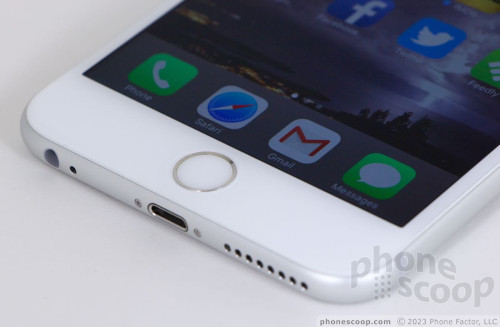
My favorite aspect of the 6s Plus's design is the rounded side edges. They really help improve the phone's comfort. Competing handsets such as the Galaxy S6 Edge+ nearly cut into your palm as you hold them. The 6s Plus's left side houses the ringer switch and separate buttons for adjusting the volume. The ringer switch is easy to find and use, and the action is quite good. The volume buttons have good profiles and excellent travel and feedback. I like that the buttons' texture is slightly smoother than the rest of the side edge. The right edge houses the screen lock / power button and the SIM card tray. For such a big phone, the screen lock button is positioned a bit too close to the top edge. The 6s Plus would be easier for people to use if the button were placed more centrally along the side. A tool (not included) is required to eject the SIM card, but most people probably won't have any need to pop it out.
The bottom edge of the iPhone 6s Plus is a busy place. It holds the stereo headphone jack, a microphone, Apple's Lightning port, and speaker. A couple of special screws flank the Lightning port and are plainly visible. There are no controls, buttons, or ports along the top edge of the phone, which is a smooth, rounded surface.
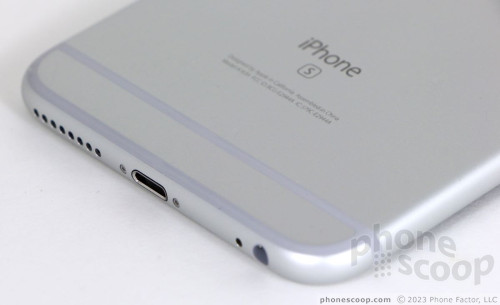
It's worth pointing out that Apple's Lightning port, while popular, is technically proprietary. You need a pricey adaptor to make it work with industry-standard phone connectors like micro-USB and the newer USB Type C. Curiously, Apple has adopted the new USB Type-C plug for more than one new product this year, but chose to stick with Lightning for its phones and tablets... for now. They haven't said when or if that might change in future iPhone models.
All iPhones since the 2010 iPhone 4 have had perfectly flat back surfaces. I like flat rear panels, as they make phones easier to use when they are placed on an even surface, such a table or desk. The drawback is a blockier phone that doesn't fit your hand as well. The 6s Plus's rear surface is flat, save for the camera module, which protrudes significantly. The camera hump won't matter if you use a case.
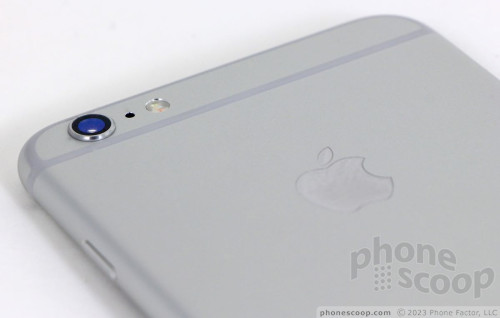
The iPhone 6s Plus is sealed up tight; you cannot access the battery. This may be a deal breaker for some people, but I think the abundant availability of third-party battery cases and packs negates any need for worry. (More on the battery life below.) Similar arguments can be made for and against the iPhone's lack of support for expandable memory.
Truly, the iPhone 6s Plus is an attractive, well-made chunk of hardware that should please most anyone who picks it up.
Screen
The iPhone 6s Plus has a 5.5-inch display with full HD (1920 x 1080p) resolution. Apple uses LCD panels and the 6s Plus's "Retina Display" looks great. I found it to be bright enough for use both indoors and out, and it delivers excellent color accuracy. The iPhone's screen offers fantastic viewing angles with no brightness or color change. The resolution works well for keeping text and imagery smooth, but it's worth noting that nearly all of Apple's main competitors (Samsung, LG, Motorola) have stepped up to quad HD (2560 x 1440) resolution for their flagship smartphones. That said, the iPhone's screen is certainly good enough for most people.
Signal
I tested the 6s Plus on AT&T's network in the metro NYC region over the course of several days. During this period, I had absolutely zero trouble using the phone. It remained connected to AT&T's 4G LTE network without fail. Even in poor coverage areas, the phone provided at least some LTE service. I didn't see the 6s Plus drop to 3G (HSPA) at all. Data speeds were quite impressive, and the phone was always able to connect voice calls. The 6s Plus did not drop any calls, nor did it miss any. The phone worked perfectly in a speeding car, which means it maintained a call over a course of 10 miles and multiple cell sites.
Sound
The 6s Plus is a good voice phone, but stops short of being a great voice phone. Volume issues are the culprit. With the phone's volume set around the 50% mark, the clarity of calls is mostly good and voices sound pleasant. If you're in a quiet home or office, that's fine; if you're anywhere else, calls are harder to hear. I found myself cranking the volume all the way up for most calls out of the house in order to hear them. Blasting your ears at full tilt results in distortion in both the earpiece. Distortion degrades the quality a bit. Sadly, finding the sweet spot between clarity and volume is a bit of a balancing act. Those I spoke to through the 6s Plus said I sounded good. (All calls made via regular cellular networks; no WiFi Calling, no VoLTE/HD Voice.)
The speakerphone is capable of high volumes, which means you can hear calls in noisy spaces, such as moving cars or city streets. At the same time, setting the speakerphone all the way up results in a bit of distortion. It's not as noticeable as the earpiece.
Ringers and alerts are plenty loud enough for you to hear. I didn't miss any calls for lack of hearing the phone ringing. The vibrate alert, however, could be stronger.
Music sounded quite impressive when passed through the headset jack to capable headphones or speakers.
Battery
One of the changes between the iPhone 6 Plus and 6s Plus happens to be the size of the battery. If you're thinking Apple improved the battery size, you'd be wrong. Apple actually reduced the size of the battery (to accommodate the Taptic Engine). Even so, Apple claims the 6s Plus delivers about the same battery life as the 6 Plus, if not a little more. Fortunately, I find this claim to be accurate.
The iPhone 6 Plus has nearly always given me one and a half (if not two) days of battery life. The iPhone 6s Plus provided this same amount of up time. For example, I charged the phone overnight Friday into Saturday. I unplugged it Saturday morning and didn't plug it back in to charge until Monday morning, when it still had 41% battery left. I tested the phone heavily all weekend. The A9 processor is probably playing a role here, as is the streamlined iOS 9 operating system, which is a bit more aggressive at managing power consumption.
If you get into trouble, you can turn on low-power mode, which limits background tasks, turns down the screen brightness, and silences some notifications. Apple says low-power mode adds a couple of hours to battery life.
The iPhone 6s Plus provides slightly better battery life than some competing handsets, like the Galaxy Note 5 and the LG G4, but it doesn't have as many cool tricks. For example, the Note 5 supports rapid charging, where the 6s Plus does not. Moreover, the Note 5 supports rapid wireless charging (Samsung wireless charger required). The iPhone doesn't support wireless charging at all, let alone rapid wireless charging.
Good battery life, or fancy charging tricks: you pick.
Radios
The 6s Plus has Bluetooth, GPS, NFC, and WiFi.
The Bluetooth radio did a great job. I had no trouble connecting it to headsets, speakers, nor my car. Calls pushed through my car's hands-free system were good enough to understand conversations at highway speeds. Apple hasn't specified whether or not the 6s Plus supports the high-quality aptX music profile, but I was nonetheless impressed with the clarity and punch of music when I listened to it through my favorite Bluetooth speaker.
The GPS radio worked perfectly. The iPhone 6s Plus located me quickly in both Apple Maps and Google Maps. Apple Maps now includes transit directions for select U.S. cities, but I had mixed results when testing them in the metro NYC area.
The NFC radio works with only a single app: Apple Pay. I wish Apple would allow the NFC radio to interact with other NFC-equipped hardware, but it's locked down at the moment. The NFC radio does its job with Apple Pay, no questions asked.
Apple added the latest WiFi radio to the 6s Plus and it does a good job for the most part. There's one new feature worth mentioning: WiFi Assist. With this tool turned on, the 6s Plus will drop sketchy WiFi connections in favor of LTE. I found WiFi Assist works as advertised. For example, when I stepped outside my house and walked down the street, the 6s Plus was faster to let go of my home WiFi network and switch to AT&T's cellular network. Apple added this feature because people often find their iPhones trying too hard to use WiFi even when the connection is miserable. Sometimes LTE is better and/or faster. The downside is your iPhone is likely to consume more mobile data. I recommend you test this feature cautiously yourself, paying attention to your data plan.
Software
Lock Screen
Apple's lock screen has evolved significantly over the years. With iOS 9 aboard the iPhone 6s Plus, the lock screen can offer as much or as little content as you want.
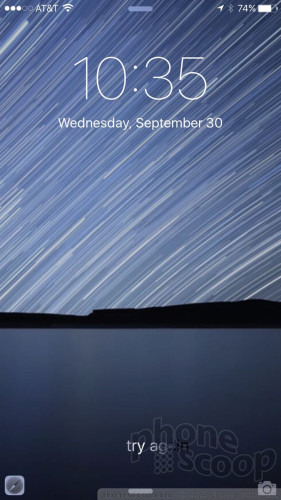
To start, the 6s Plus has a brand new Touch ID fingerprint sensor. This is the new gold standard in fingerprint sensors. Once you train a few fingerprints, the 6s Plus will unlock your phone faster than you can even think to peck in your PIN. Seriously, there is no faster way to unlock the 6s Plus. If you're not into biometrics, you can still protect your phone with a 4- or 6-digit PIN, or a more complicated password. It's up to you.
At its core, the lock screen includes the clock in big numbers at the top of the screen, as well as shortcuts to the browser and camera. You may elect to enable Control Center (swipe up from the bottom to access basic controls) on the lock screen or not. The notification shade is always available from the lock screen (maybe a security oversight?), and it can contain tons of information.
Almost every app you install these days asks whether or not you'll accept notifications. Apps you've granted permission to send notifications will populate the shade with whatever content it is they're pushing, be that incoming email alerts, app updates, or breaking news/weather reports. You may choose to let apps wake your screen with the latest alert, or leave your screen dark to keep the content private.
The one thing you can't do with the notification shade is dismiss all notifications at once. Instead, you're limited to dismissing the notifications for each individual app. In other words, let's say you get three email notifications and nothing else. You can dismiss all three emails notifications at once. If you get one email, one text message, and one missed call, each of these has to be dismissed individually. It can be a pain if you allow a ton of apps to send you notifications.
The notification shade also offers the Today tab, which is something I've come to really like since it debuted in iOS 7. The Today tab supports widgets, which can include your calendar, weather, news, traffic, reminders, stocks, and much more. It you're checking your notifications, just swipe over to see the latest information — all without unlocking the phone.
Home Screens
Despite shipping with a new operating system (iOS 9), home screens function on the iPhone 6s Plus in almost the same way they did on the first iPhone back in 2007. (We reviewed iOS 9 in depth earlier this month. Feel free to read about all the new features here.)
iPhone owners can place up to 24 apps on each home screen, or many more in folders. There are no widgets here, and apps still snap up and to the left into a self-forming grid. Four apps of your choice are always accessible from the dock at the bottom of the screen. The settings tools grow in number each year, but their organization and usability is about the same as always. It's a cinch to adjust wallpapers, ringtones, alerts, and other custom behaviors. iOS allows you to tweak font and icon sizes, too.
The iPhone 6s Plus has Apple's new A9 processor with M9 motion co-processor. It also has twice as much RAM as the iPhone 6 Plus at 2GB. The difference in performance is palpable; the 6s Plus absolutely screams. It is a fast, fast phone.
3D Touch
3D Touch is one of the few major additions to the iPhone this year. It's not available to older iPhones; it relies on a new hardware component, so it's exclusive to the iPhone 6s and 6s Plus. 3D Touch is a game-changer for mobile devices and their operating systems. Down the road, I imagine that all devices will have something akin to 3D Touch.
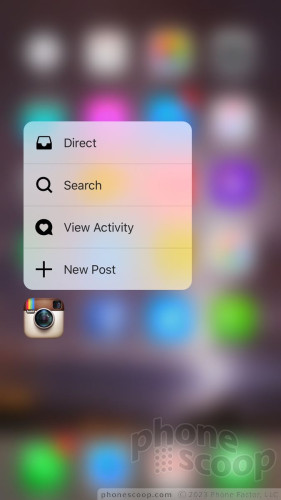
With 3D Touch, Apple was able to improve the display such that it recognizes how hard you press the screen. The iPhone 6s Plus has an extra layer underneath the screen to measure the tiniest changes in the pressure on the glass. The 6s Plus also includes the Taptic Engine (a fine-tuned vibrating motor) to provide feedback when you use 3D Touch. The thicker screen module and Taptic Engine are the culprits behind the 6s Plus's weight and thickness increases.
When I first started using 3D Touch, I was surprised by how much force is needed to make it function properly. A casual brush of the finger won't do it; you actually have to press the screen with a fair amount of pressure. When you do, two things happen: first, an action menu that corresponds to the app you pressed pops up, and second, the Taptic Engine provides a super-quick, micro-burst of vibration. Apps that don't yet support 3D Touch provide two vibration bursts.
The actions available in these secondary menus varies by app. In Twitter, for example, you can start a new direct message, new Tweet, or perform a search. iMessage lets you start a brand new message, or respond to one of the last three people who messaged you. Safari will let you see the reading list or bookmarks, or open a new tab or new private tab. The Calendar lets you add a new appointment, while the clock lets you set a new alarm.
These may not seem like game-changing activities, but they are. For example, if I wanted to write a new direct message in Twitter before 3D Touch, I had to open the app, press the private messages button, and then tap the Compose Message button. 3D Touch chopped the number of screen presses from three to one. Multiply this across all the little interactions you have with apps throughout the day and you're going to start saving real time.
It's a lot more fun inside certain apps. For example, in the iMessage app, a 3D Touch of a message will pop open the conversations. You can dismiss the pop-up by letting go of the screen, or load it fully by swiping down. This same pop and peek function is sprinkled throughout the platform, such as in the Photos app (lets you preview images), the email app (lets you preview emails), the contacts app (brings up shortcuts for calling/messaging people), and so on. There isn't an official master list defining which apps support 3D Touch and how, so you have to discover them in a trial-and-error fashion.
At launch, the number of apps that support 3D Touch on the iPhone 6s Plus are few and far between. Not even half of Apple's own apps can take advantage of the new screen technology, and the availability of third-party apps that can handle 3D Touch is next to none. Still, the potential is absolutely huge.
3D Touch will change how you interact with the iPhone. This feature alone makes it worth updating to the 6s Plus.
Siri
We covered most of Siri's new tricks in our review of iOS 9, but some of them are worth mentioning again here.
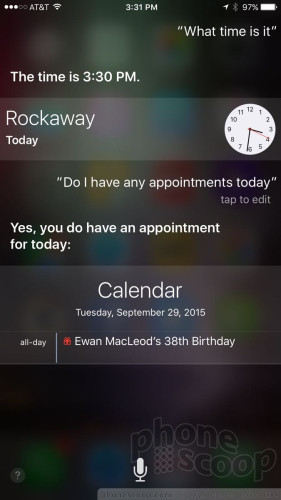
With the 6s Plus, the iPhone no longer needs to be plugged in to use the "Hey, Siri" trick. Want to ask Siri a question, but don't feel like reaching over to pick up your phone? Just say "Hey, Siri" and Siri will launch even when the phone is unplugged. To be fair, Google Now has supported this for some time (especially on Motorola devices). Even so, having Siri available at your beck-and-call without first grabbing your phone feels liberating.
Need to set a calendar appointment? "Hey, Siri…"
Want to listen to some music? "Hey, Siri…"
The best part? Siri is able to hear even in moderately noisy spaces. For example, I was listening to some music and even though the iPhone 6s Plus was sitting about a foot from the speakers, Siri had no problem hearing and processing my request.
None of this would matter much if Siri weren't also much better at understanding natural language interactions. What's more, Siri is able to interact with a much broader range of apps on the phone. Added together, Siri's new responsiveness and accuracy make for a much improved experience across the board. It almost feels like we've reached the voice-controlled future. Almost.
The other half of Siri's improvements found in iOS 9 (though not specific to the iPhone 6s Plus) is the refreshed search function. Swipe the home screen over and you'll see a new set of search tools, including suggested contacts, suggested apps, nearby searches, and some news headlines. The idea is to make it quicker to perform certain types of searches and find specific things. In that respect, the changes are mostly good.
Camera
The camera application itself is largely carried over from that of iOS 7 and iOS 8. You can launch the camera from the lock screen if you wish, or from the home screen panels. Either way, it opens in a blink.
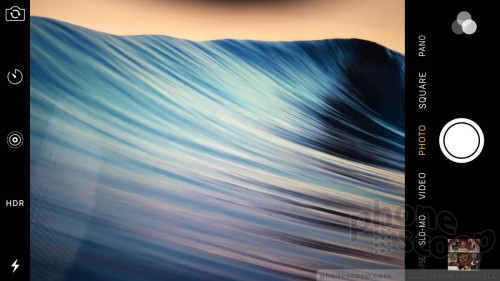
The iPhone camera app offers a handful of basic shooting modes: normal, panorama, and square for pictures, plus normal, slo-mo, and timelapse for video. All six of these are accessed by swiping the viewfinder from one to the next. Several controls are positioned on the edge of the screen. They let you switch to the user-facing camera, toggle HDR and the flash through on/off/auto, as well as set a timer.
The only real new feature added to the camera on the 6s Plus is Live Photos. Live Photos is new to the iPhone, but not new to smartphones in general. HTC gave us a similar feature in the Zoe with its One smartphone back in 2013. The idea is to capture a short video clip along with each still picture. When Live Photos is turned on, the iPhone automatically captures 1.5 seconds of video before and after you actually press the shutter button. The result is a combined still image / video clip that includes motion and sound. For example, I took a picture of my daughter doing a cartwheel. The image is a still of her in the middle of the cartwheel, but the Live Photo shows the entire cartwheel from start to finish.

The end result is about the same as what the HTC Zoe offers, but Apple's execution is much better. Live Photos work flawlessly and are easy to spot in your photo gallery and view. In fact, Live Photos can be viewed on any Apple device, which means sharing them is easier than it ever was to share Zoes.
The other big trick added to the iPhone 6s Plus's bag of surprises is the Retina Flash. The user-facing camera doesn't have an LED bulb; instead, the phone will blink the screen for a second when taking selfies. How does Retina Flash work? It's doing a lot more than just flashing the display. According to Apple, Retina Flash will fire off a preflash to detect the lighting around you and adjust the tone of the flash match the ambient light. Moreover, a custom chip blasts the display at a brightness that is three times as high as the screen can typically go.
The effect is surprisingly good. I was impressed with the quality of illumination and the accuracy of skin tones in the resulting images. I may just start taking more selfies.
The iPhone's camera has always been dead simple to use, and that's not changed on the iPhone 6s Plus. It may not be the most advanced, nor offer the most features, but the tools it does include function perfectly.
Photos/Video
Apple really stepped up the camera this year. For the first time since 2011, Apple improved the pixel count from 8 megapixels to 12 megapixels. Apple says the iPhone 6s Plus has a new sensor, a new image signal processor, and Focus Pixels to help improve image stabilization and tone. What does all this technical mumbo-jumbo mean? The iPhone 6s Plus takes damned impressive pictures.
I was most impressed by the 6s Plus's ability to handle challenging scenes, like my daughter's night-time soccer practice. The bright lights illuminating the field could easily have wreaked havoc on the exposure thanks to insane amounts of contrast, but the 6s Plus managed to balance out the highs and lows perfectly. It also does well in low-light conditions, such as the shot of my cuckoo clock, which was taken in a dark room. Are the images sharp? You betcha. Are they colorful? Yup. Are they pleasing to look at? Indeed.
How does it fare against the competition? I'd call the Note 5 and iPhone 6s Plus close to even, though Apple's smartphone has a slight edge. The Note 5 captures more pixels, but in the 16:9 aspect ratio. The iPhone shoots in the 4:3 aspect ratio. If you crop the Note 5 down to 4:3, it captures about the same number of pixels the iPhone does. Comparing these images, I thought the 6s Plus came out ahead, especially with respect to exposure — but again, only by a hair.
The selfie camera got a huge upgrade, jumping from 1.2 megapixels to 5 megapixels. Between the improved sensor and the Retina Flash, the 6s Plus is the best selfie machine you can ask for. The 6s Plus produces dramatically better selfies than the iPhone 6 or 6 Plus.
The iPhone 6s Plus also offers more video-capturing options than any previous iPhone. It can record at 720p, 1080p at 30fps or 60fps, and now 4K at 30fps. The default is 1080p at 30fps. No matter which option you choose, the results look great. The iPhone 6s Plus produces excellent video. I was very pleased with the results.
A few words about 4K. First, don't bother if you don't have a 4K TV or monitor at home. Second, it uses an insane amount of storage. For example, 1 minute of 1080p video consumes about 130MB of space. One minute of 4K video eats up nearly three times as much: 375MB. If you buy the 16GB model, a mere 30 minutes of 4K video will chew through all the storage space on the phone, and that's assuming you have no downloaded apps, no music, and no photos.
The 1080p is more than adequate.
Apple Bloat
The iPhone 6s Plus has more junk apps from Apple than any previous iPhone. Apps you can't delete include iBooks, Compass, Find Friends, Game Center, Health, Mail, News, Notes, Podcasts, Reminders, Stocks, Tips, Voice Memos, Watch, and Weather. Apple CEO Tim Cook said Apple may allow users to delete some of these apps eventually, but don't expect that day to arrive any time soon.
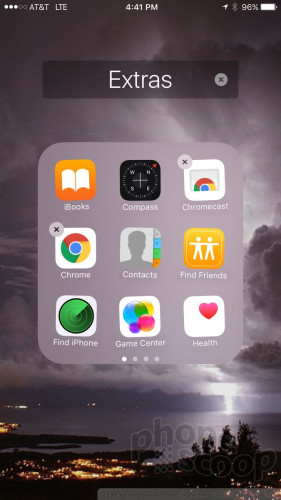
Many of these apps stink or will never be used by most people, but Apple improved several of them.
Most importantly, the Notes app has been given a new lease on life thanks to expanded capabilities. It supports scribbling, photos, links/web sites, and cross-device syncing. It doesn't compete with OneNote or Evernote, but it is much improved.
Apple News is the newest bit of bloat to land on iPhones. It is best used to collect articles from your favorite news sources for later reading. Apple News offers a reasonably good selection of topics and publications, and makes reading them in one place a breeze. Flipboard does the same thing in a much more attractive and pleasing way.
It's important to note that the 6s Plus comes in 16GB, 64GB, and 128GB models. The 16GB model is practically useless thanks to its limited storage space. Skip it and spend the extra $100 (groan) for the 64GB model.
Wrap-Up
It's not a stretch to say the iPhone 6s Plus is the best iPhone Apple has ever made. I am generally not all that impressed with the odd-year "S" models, but this time around things are different. The 6s Plus is significantly better than its immediate predecessor, and most of the competition. The 6s Plus may look identical to last year's iPhone, but nearly everything that counts has been improved.
The hardware is as refined as always; the display impresses; wireless network performance is top-notch; and battery life is quite good. I wish it were a bit better for making phone calls, but it still does well enough.
3D Touch sets the iPhone 6s Plus apart the most. It adds a layer of shortcuts to the home screen that can speed up certain activities. Its initial feature set is somewhat limited, but I expect it to expand rapidly. Some may be unimpressed, but 3D Touch is only going to get better with time.
The camera is the other big selling point for the iPhone 6s Plus. The improved sensor takes better pictures and Live Photos are a fun new feature that will surely delight many. The user-facing camera receives a huge boost in performance thanks to the new sensor and flash.
Who is the iPhone 6s Plus for? If you're using an iPhone older than the 2013 iPhone 5s, please go out and get the 6s or 6s Plus right away. If you have a 6 Plus from last year, the 6s Plus is enough of a jump that I'd recommend it, but only if you can sell your old phone to offset the cost.
Speaking of which, the iPhone 6s Plus is pricey. The 64GB model costs $849. Most competing devices — even the Galaxy Note 5 — cost less. It may be out of reach for many people, but installment plans from the carriers are one option to make it a more palatable purchase.
The Galaxy Note 5 may be the best Android device in the market, but the iPhone 6s Plus is the best smartphone in the market.

Comments
Force Touch
The thing is, had Samsung or any other manufacturer came out with Force Touch first, it would be a gimmick. But when Apple does it, It's "groundbreaking!", "innovative", "a game changer" and best invention since sliced bread. It's ridiculous how the media and tech bloggers literally bow down and kiss Apple's a$$ any chance they get. Especially the d-bags over The Verge. They're the worst. Force Touch a game changer? Are you f*cking kidding me? Samsung came out with something similar first, there are hardly any apps to take advantage of it and won't be for a while. Not to me...
(continues)
For real, you sound like some rape victim. What is more baffling to me is why people think that everything has to be original for someone to take credit for it. You do realize everything yo...
(continues)


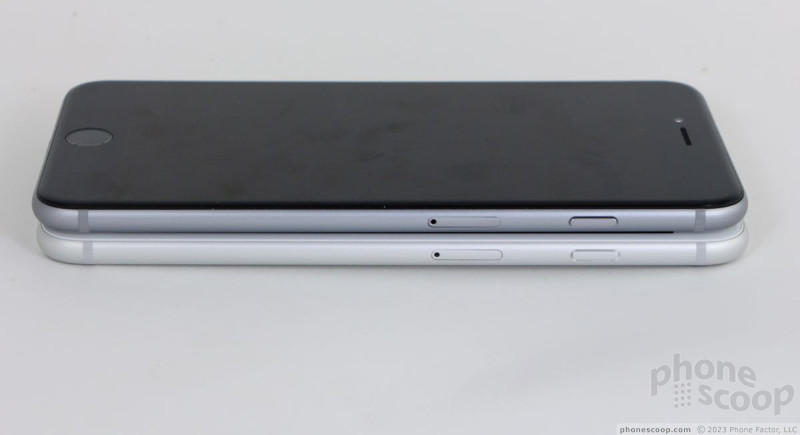




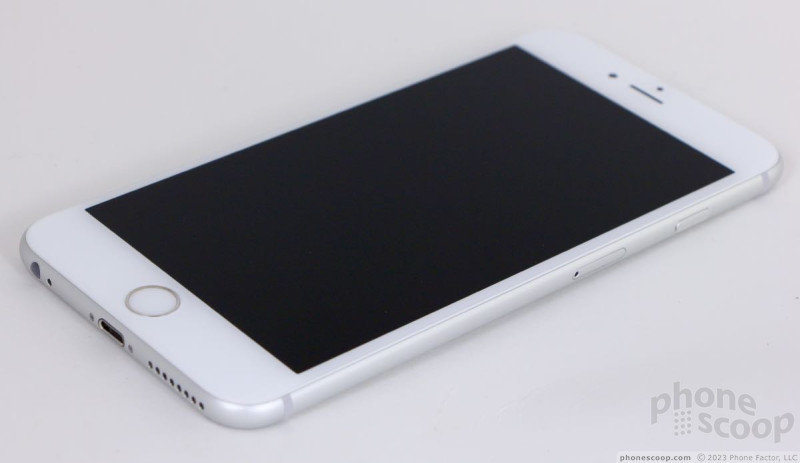












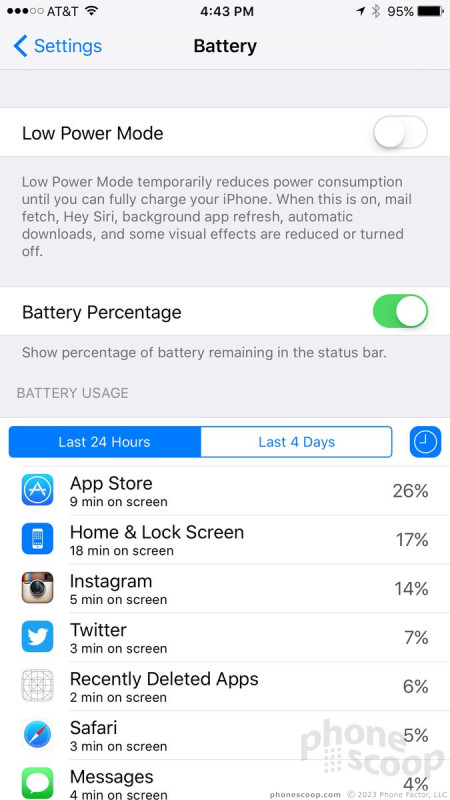


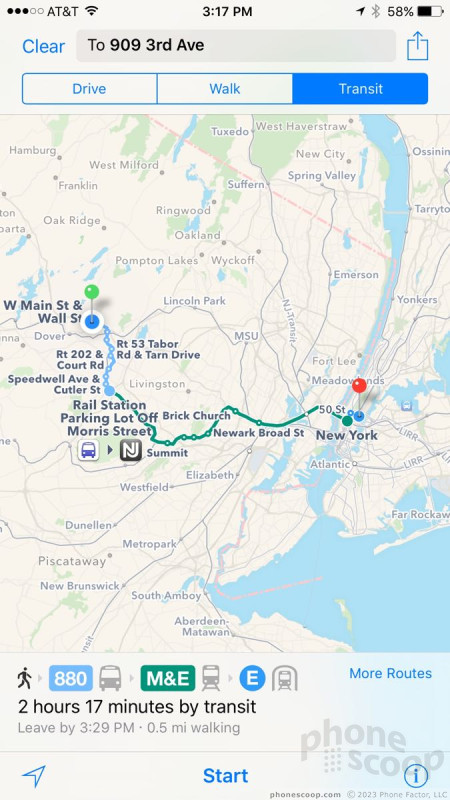




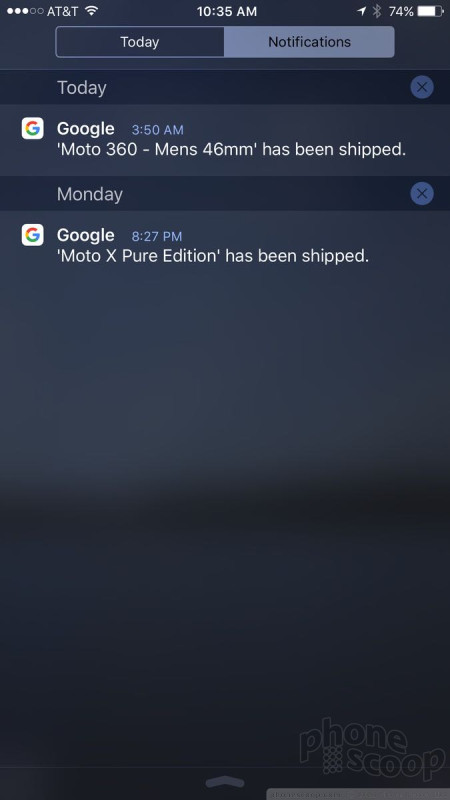





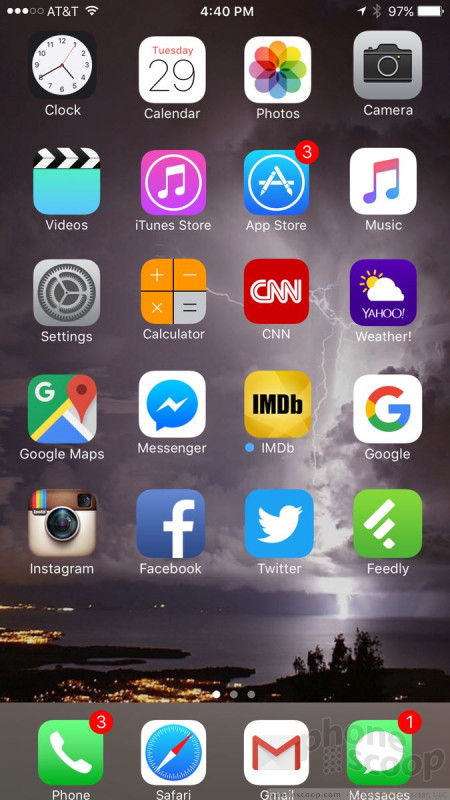




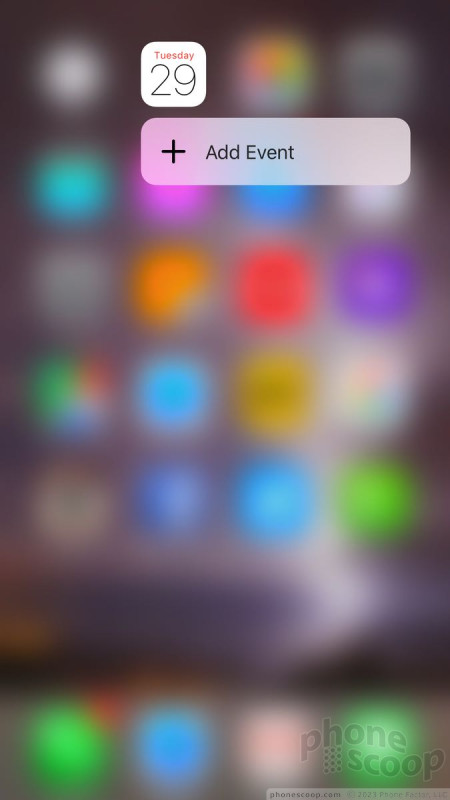








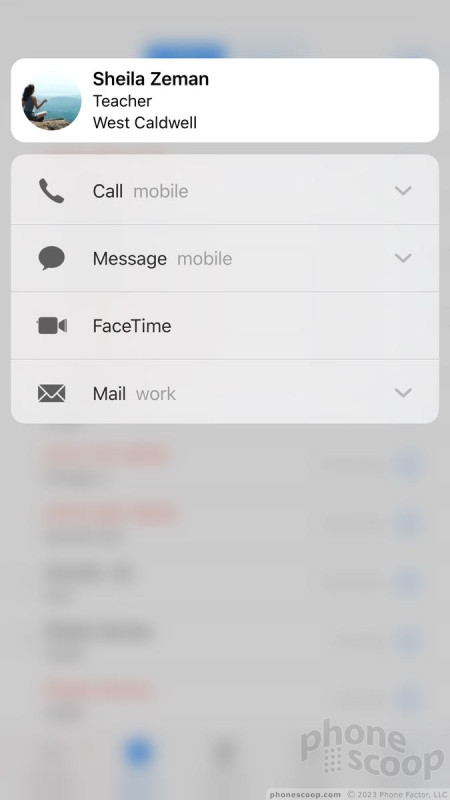



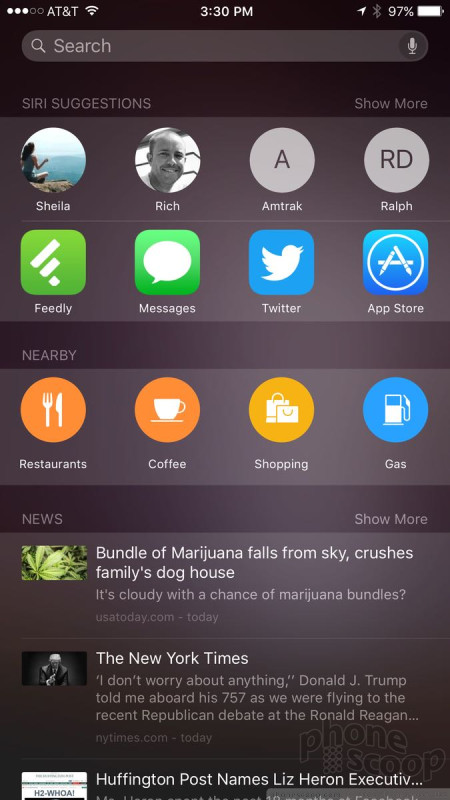




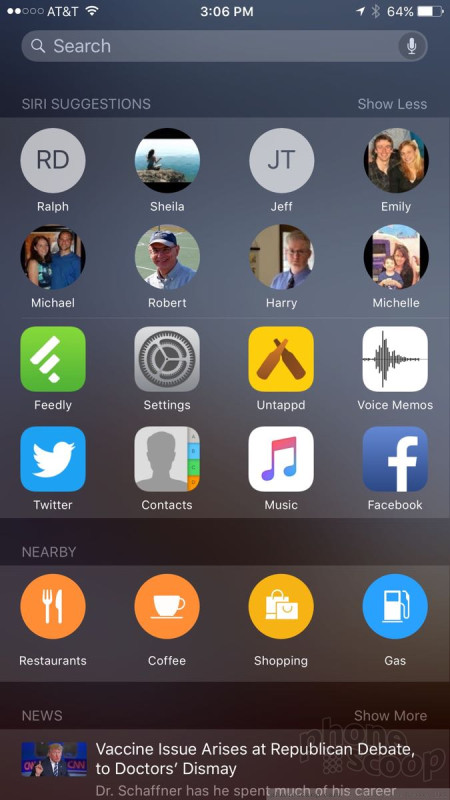




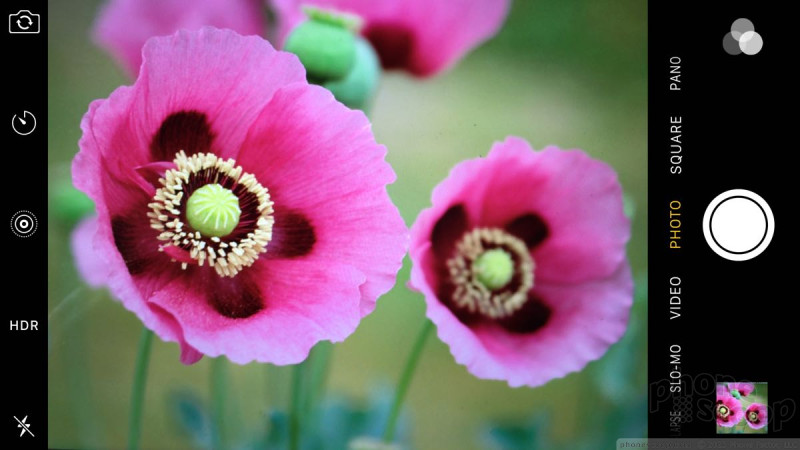






















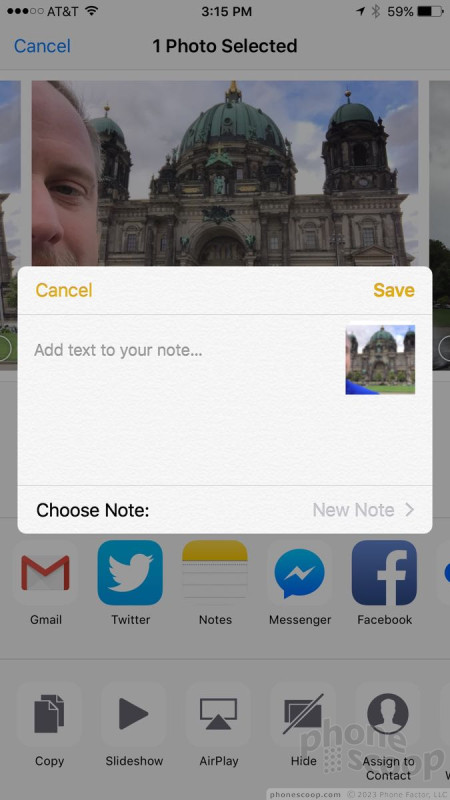




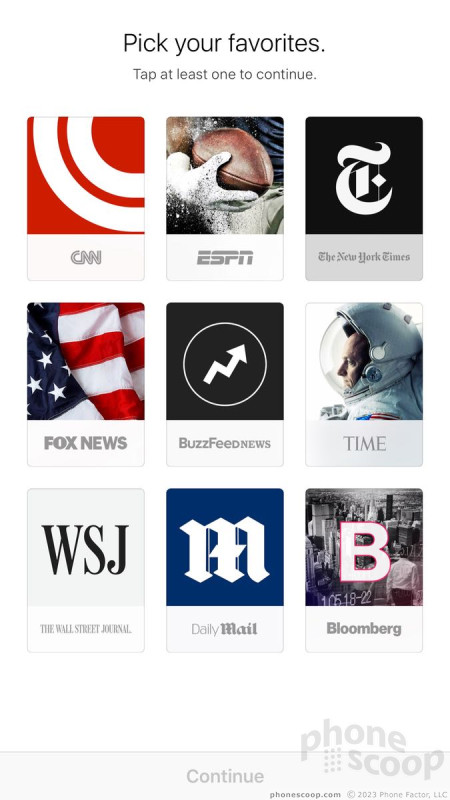




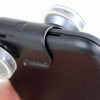 Review: Otterbox Universe and Olloclip 4-in-1
Review: Otterbox Universe and Olloclip 4-in-1
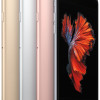 Apple Improves iPhone 6s and 6s Plus with 3D Touch
Apple Improves iPhone 6s and 6s Plus with 3D Touch
 Google Maps for iOS Gains Multiple-Stop Tool
Google Maps for iOS Gains Multiple-Stop Tool
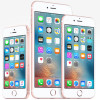 MetroPCS Opens Up iPhone Sales Nationwide
MetroPCS Opens Up iPhone Sales Nationwide
 AT&T Adds Touch ID Support to MyATT App
AT&T Adds Touch ID Support to MyATT App
 Apple iPhone 6s Plus
Apple iPhone 6s Plus





